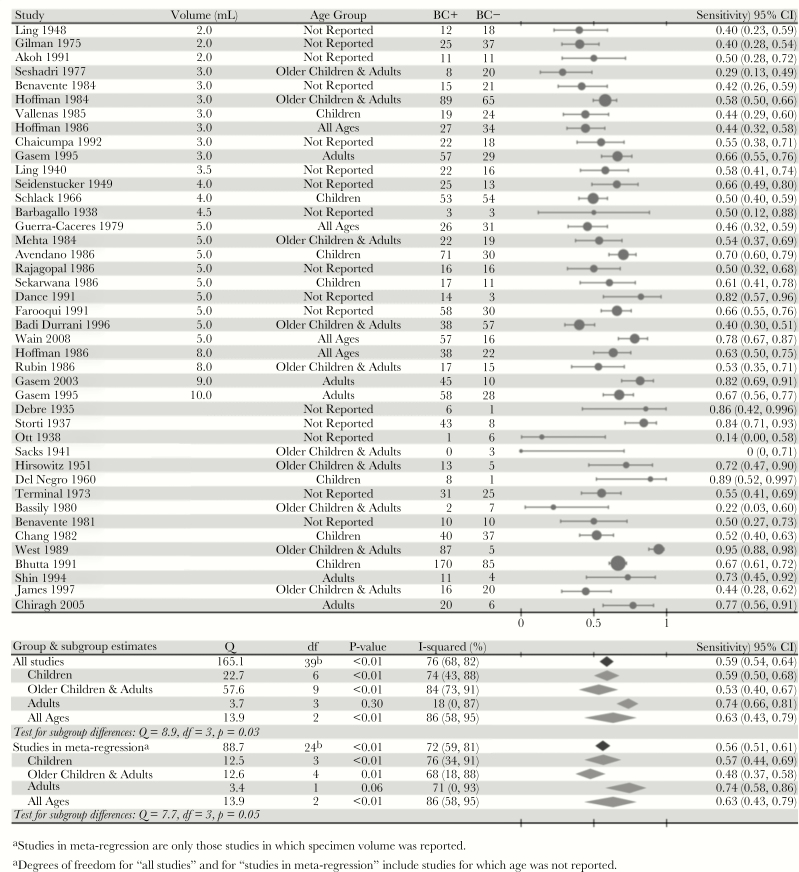Figure 2.
Sensitivity of blood culture to detect typhoid fever. The sensitivity of blood culture is expressed as the proportion of patients who tested positive by blood culture among patients who had at least 1 positive culture (bone marrow, blood, rose spots, stools, or urine) for Salmonella Typhi or Salmonella Paratyphi. The size of the markers is proportional to the number of patients in the study. We reported the midpoint volume of the blood sample for studies that reported specimen volume as a range. We tested for heterogeneity and age-related subgroup differences via the Q-statistic, which is assumed to have a χ2 distribution with degrees of freedom equal to the number of studies minus 1 with noncentrality parameter equal to 0. Hoffman (1986) and Gasem (1995) (Supplemental Material) reported sensitivity on the same patient population using specimens of 2 different volumes per patient, so we have taken only the results from the larger specimen in each study for the subgroup analysis by age to avoid double-counting. Abbreviations: BC+, blood culture-positive; BC−, blood culture-negative; CI, confidence interval.

